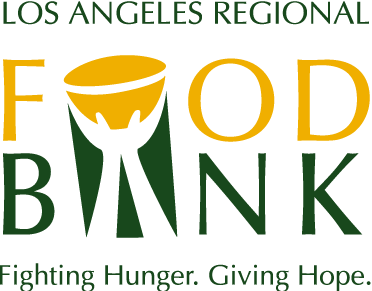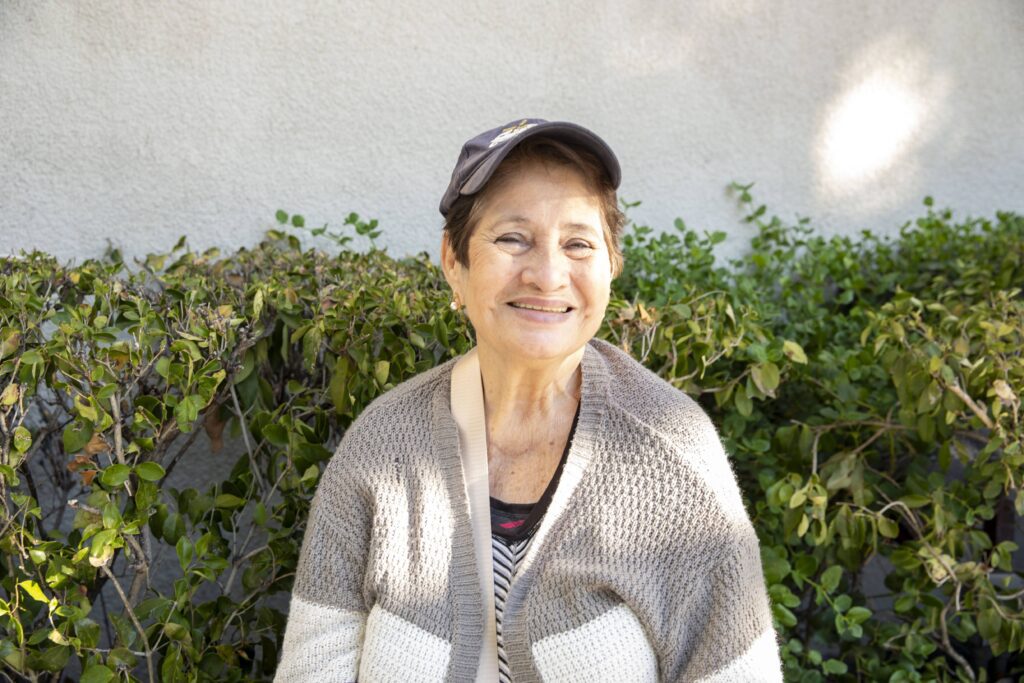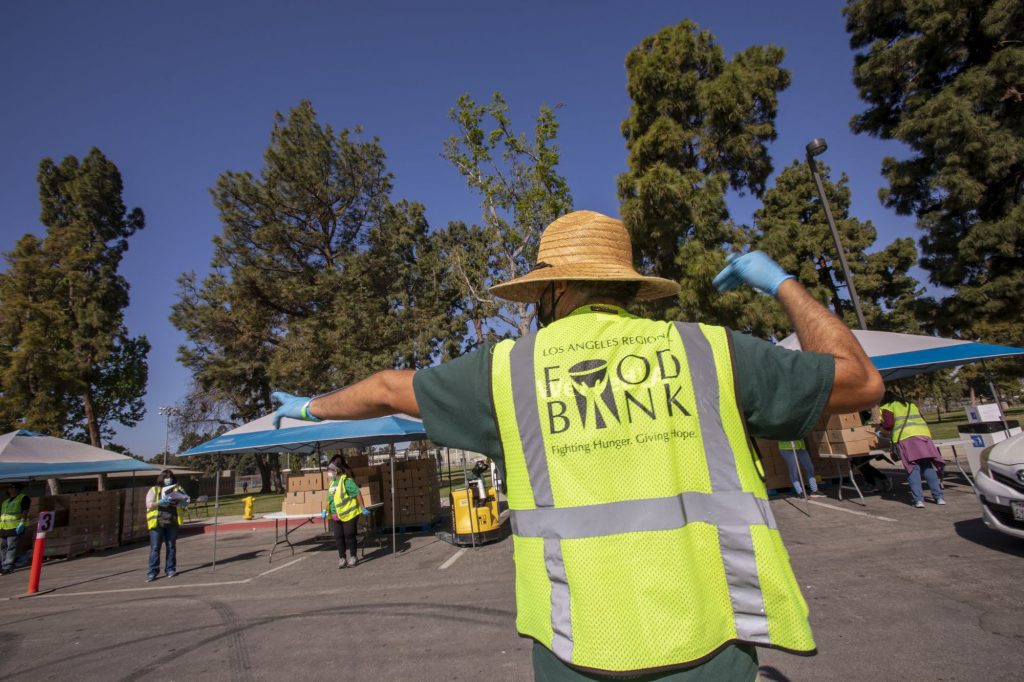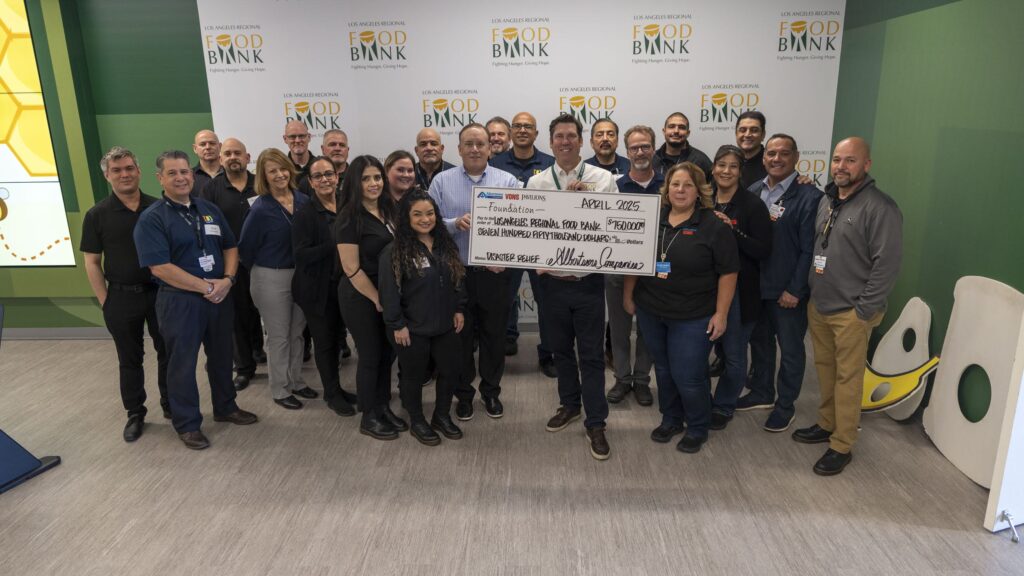How the Food Bank Fights Hunger During the Coronavirus Pandemic
How the Food Bank Fights Hunger During the Coronavirus Pandemic
Since March, the Food Bank Has Been Working Hard to Meet a Growing Need for Food Assistance, Serving More Than 500,000 Children, Adults and Seniors Each Month
The high unemployment and increasing poverty created by the coronavirus pandemic means thousands more of our neighbors have become food insecure. In the last three months, the Food Bank has provided 26.9 million pounds of food – enough for 22 million meals – through holding individual drive-through distributions and working with partner agencies across LA County.
Food Distribution Has Increased by 70% During the Pandemic
The economic fallout from the coronavirus pandemic has caused an unprecedented need for food assistance in LA County. With more workers facing layoffs and reduced hours, many individuals and families are experiencing food insecurity for the first time. Relative to the spring of last year, the Food Bank has increased distribution by 70%, reaching more of our neighbors than ever before. In the previous three months, the Food Bank has distributed 26.9 million pounds of food to people in our community, the equivalent of providing 22 million meals. Roughly nine million pounds of this food, or 7.4 million meals, have been packaged in 390,550 emergency food boxes and distributed to those in need. Before the pandemic, the Food Bank served about 300,000 people per month; now, that total is at least 500,000 people.
Food Bank operations continue to have no major impact on our staff and facilities while there is increased food insecurity. Meanwhile, the Food Bank has adjusted to supplement donations with purchased food and accommodate Public Health guidelines. Specifically, the pandemic has interrupted some donations from food industry donors, including from grocery retail stores in our Extra Helpings Program. To add to our food inventory, we have been buying food in bulk at wholesale prices. The Food Bank’s on-hand inventory includes 5.7 million meals or 7 million pounds of shelf-stable, frozen and perishable goods. The Food Bank has also held 27 special drive-through distributions so we can continue to fight hunger while social distancing.
Drive-through Distributions Provide Meals While Following Public Health Guidelines
The Food Bank has been organizing drive-through distributions in communities across LA County to provide food assistance during the pandemic and serving anywhere from 1,000-7,560 families at each. The mobile distributions reduce the need for personal interaction and provide shelf-stable, nutritious food. These distributions are a drive-through form of our Mobile Food Pantry (MFP) program, that trucks food to parking lot distribution sites across LA County.
Since March, many of our partner agencies have struggled to continue food distributions. Fifty of our partner agency sites had to suspend operations. Most of these are food pantries that provide needed groceries for their communities. Agencies still running are overwhelmed by the growing demand for assistance and keep increasing orders for food. Our two distribution centers in South Los Angeles and Commerce are continuing to operate, but they’re closed to the public by Public Health instructions. The Food Bank’s drive-through distributions allow us to reach increasingly more communities and serve areas affected by food pantry closures.
The Food Bank Adds New Agency Partners
During the pandemic, the Food Bank has added 31 new agencies to the partner agency network, already 600 strong, to help distribute food across LA County. Each month, the Food Bank provides food packages to 27,800 seniors at 149 locations across LA County. Since seniors face a heightened risk for coronavirus, we have also partnered with Amazon to help them receive healthy food deliveries while staying safely at home. Also, the Food Bank has been contributing shelf-stable items to LA County senior meals.
The Food Bank has also been working to feed students impacted by school closures. We have been supplementing school districts’ “Grab and Go” meals for students by providing food for their families. Specifically, the Food Bank has been serving families living in the LA and Inglewood Unified School Districts and the Mountain View School District in El Monte.





